Germany’s economy is unhealthy…
We have previously discussed how Germany may again be the “sick man of Europe”. The German economy has been stagnant for several years now and is recording one of the lowest growth rates among advanced economies.
The reasons for Germany’s economic underperformance are multifaceted. Tight monetary policy, a struggling construction and manufacturing sector, skilled worker shortages across various industries, and a lack of fiscal stimulus all play a role.
The country has seen zero growth since 2020 and per capita growth has been negative, even underperforming the sluggish United Kingdom.
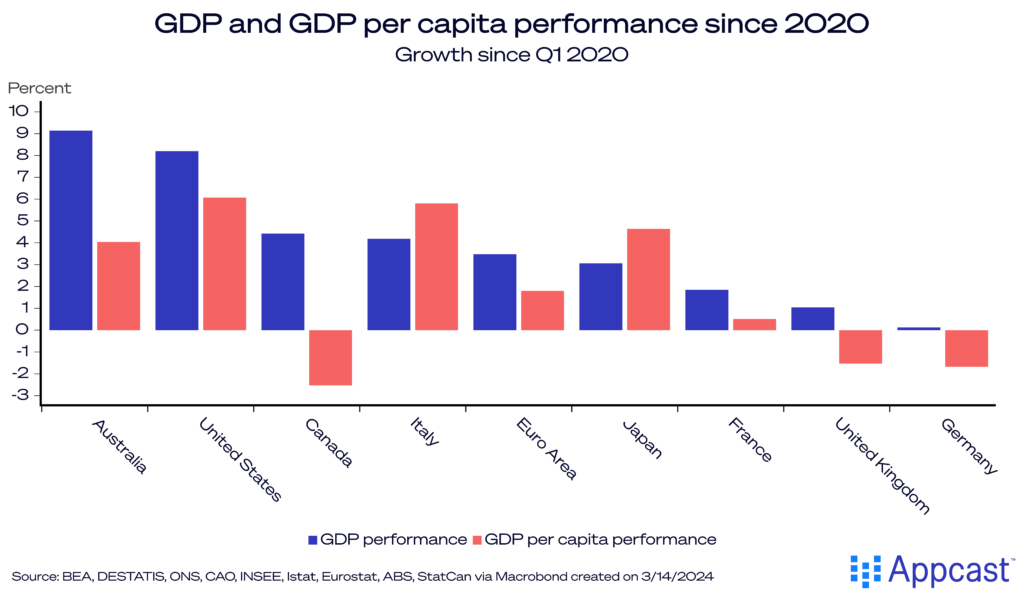
The outlook for the coming year is equally bleak. Most forecasters now project close to zero growth for this year, followed by a recovery in 2025.
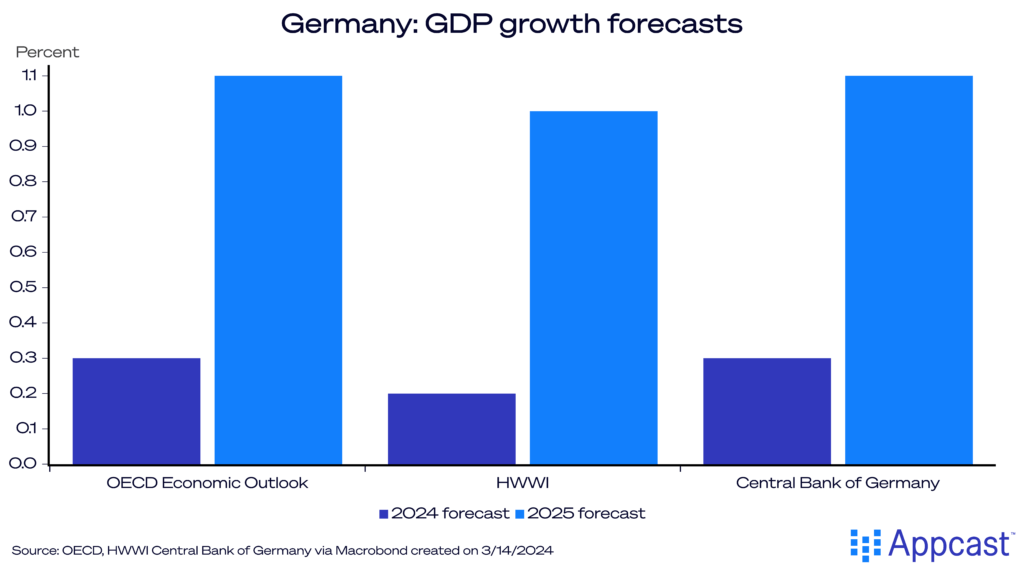
One big factor affecting Germany’s economy (which has not received the attention it deserves) is the large increase in sick leave amongst German workers. This factor alone most likely pushed the economy into a shallow recession last year.
Understanding the causes for this increase and why Germany has fared worse than other advanced economies in this respect is therefore crucial.
…and so are German workers
Data from the Institute for Employment Research (IAB) shows that the number of sick days per worker have increased significantly in recent years and are now far above pre-pandemic levels. Sick days have increased by more than one day per worker per quarter. This is a total loss of four days per worker amounting to an additional 160 million days lost due to sick leave compared to 2019.
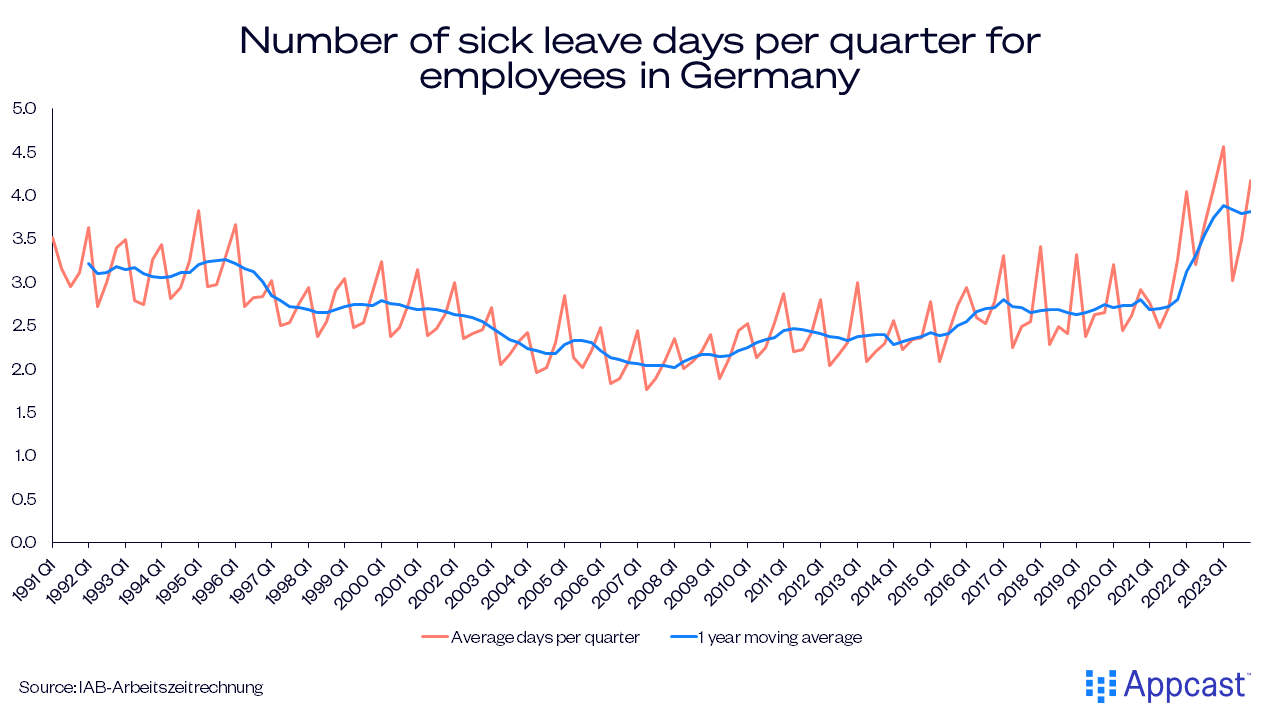
It shouldn’t be surprising that many people who got infected by COVID-19 are now suffering from long-term effects, also known as Long COVID. The global pandemic has led to a sicker workforce in general. Overburdened healthcare systems also meant that people with other illnesses were not treated in time. Furthermore, mental health also significantly suffered during the pandemic. Prolonged isolations during lockdowns, job and financial insecurities, and general uncertainty took their toll on general wellbeing.
However, in terms of work absences due to sickness, Germany currently stands out across several large economies.
While sick leave inevitably surged during the first two years of the pandemic across the world, other countries have seen a noticeable decline in 2023. Germany has not.
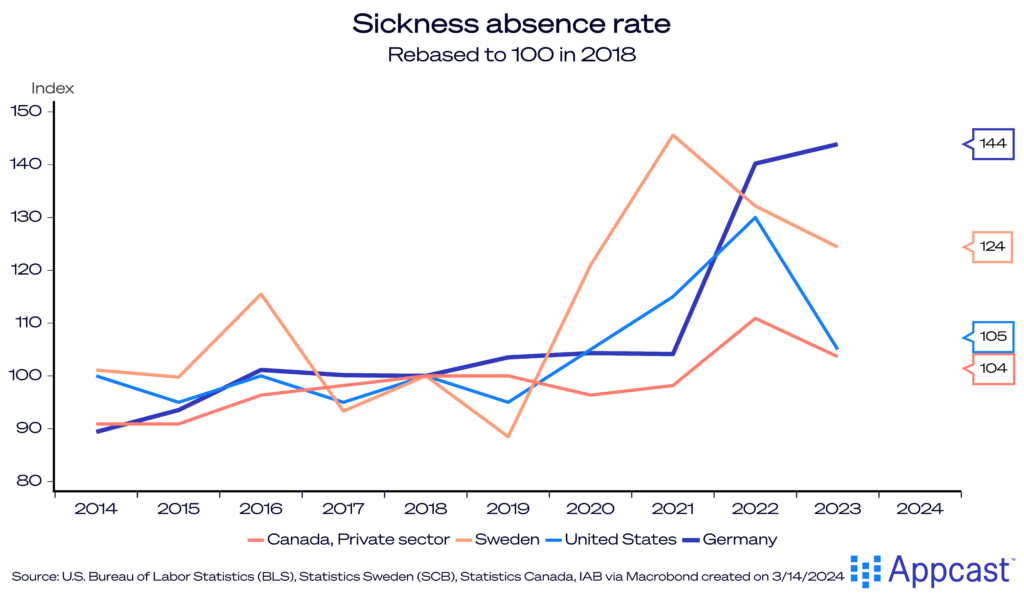
It is not entirely clear what is causing this divergence between Germany and other countries right now. Germany is hardly unique in workers suffering from health problems following the pandemic.
While sick day absence in the U.K. has fallen and remains relatively low, there are an additional half a million potential workers that have left the workforce due to long-term health issues.
One reason why the German workforce is potentially more affected might be related to the relatively severe increase in respiratory system diseases since 2020, including a severe uptick in flu activity. The 2022/2023 flu season was one of the most severe on record and this winter’s season is not yet over.
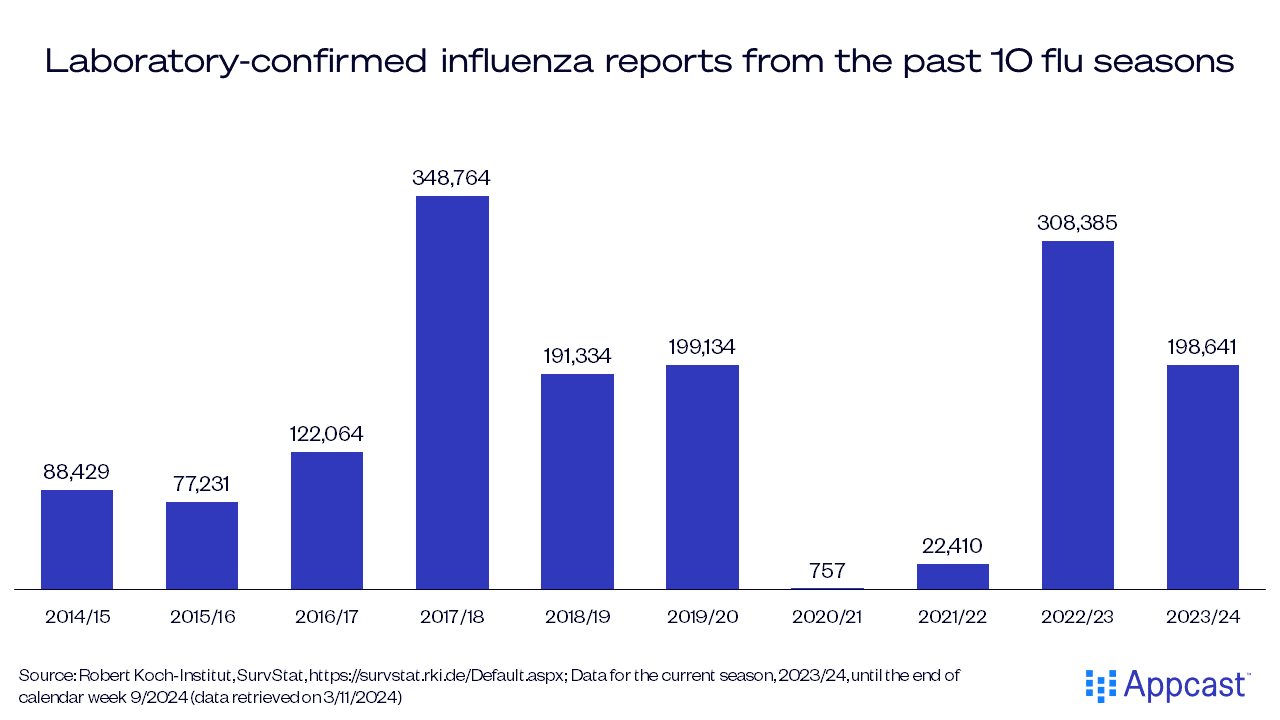
OECD data shows that the uptake of flu vaccines for older people is extremely low in Germany compared to other advanced economies – it’s only half of the vaccination rate in the U.K., for example. The WHO recommendation is 75% for 65-year-olds and above, but only around 40% of Germans in that age group are getting the shot.
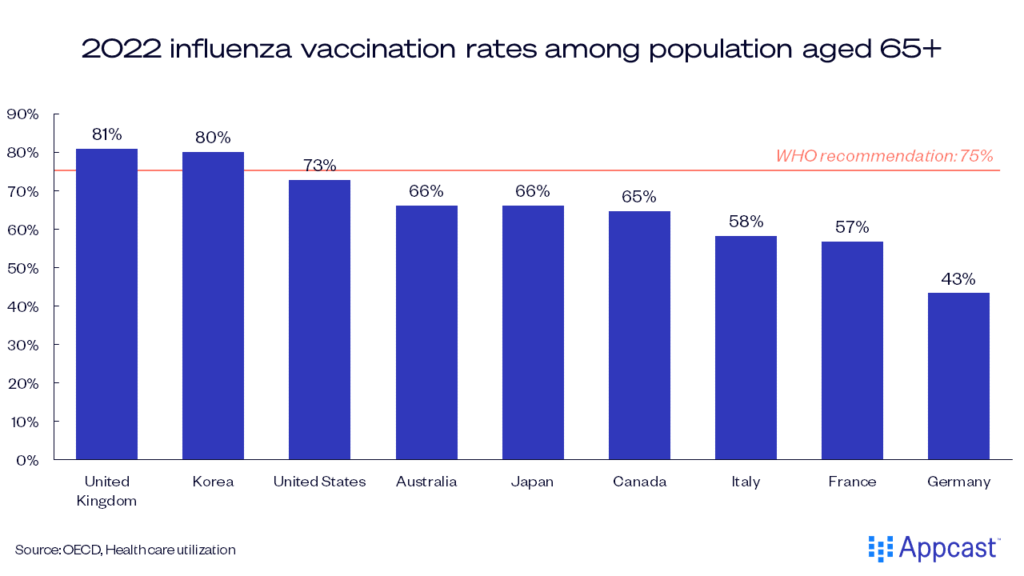
It is reasonable to assume that the uptake for younger age groups in Germany might also be lower compared to other countries. As a Handelsblatt article from 2022 discussed, the German government made sure to have some 30 million influenza vaccine available during that year, but vaccination rates were lower than expected, which can probably explain why the 2022/2023 influenza outbreak was relatively severe.
Given the recent experience with the COVID-19 pandemic together with the fact that flu activity has been more pronounced in recent winter seasons, this behavior is somewhat puzzling.
One thing is clear though, the flu waves of recent seasons have led to a severe increase in the number of sick days in 2022 and 2023 compared to previous years.
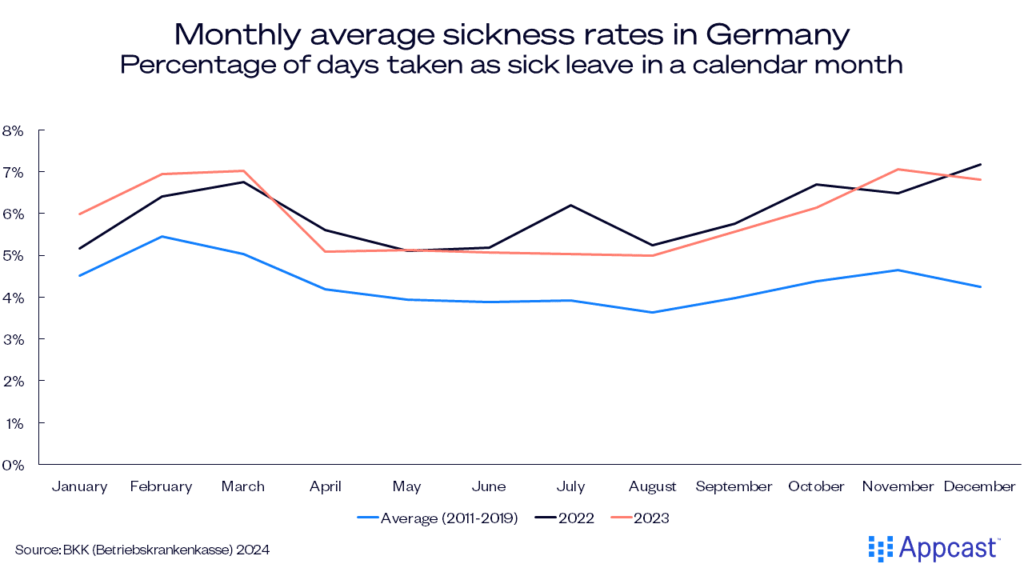
Elevated sick leave is weighing on German GDP
According to research from the VFA (“Association of researching pharma companies”), the additional four days of sick leave per worker depressed German GDP growth by about 0.6 to 0.8 percentage points throughout 2022 and 2023. The chart below shows how German output would have behaved if sick leave was at the same level as in 2019: GDP would have been some 25 billion euros higher in both years.
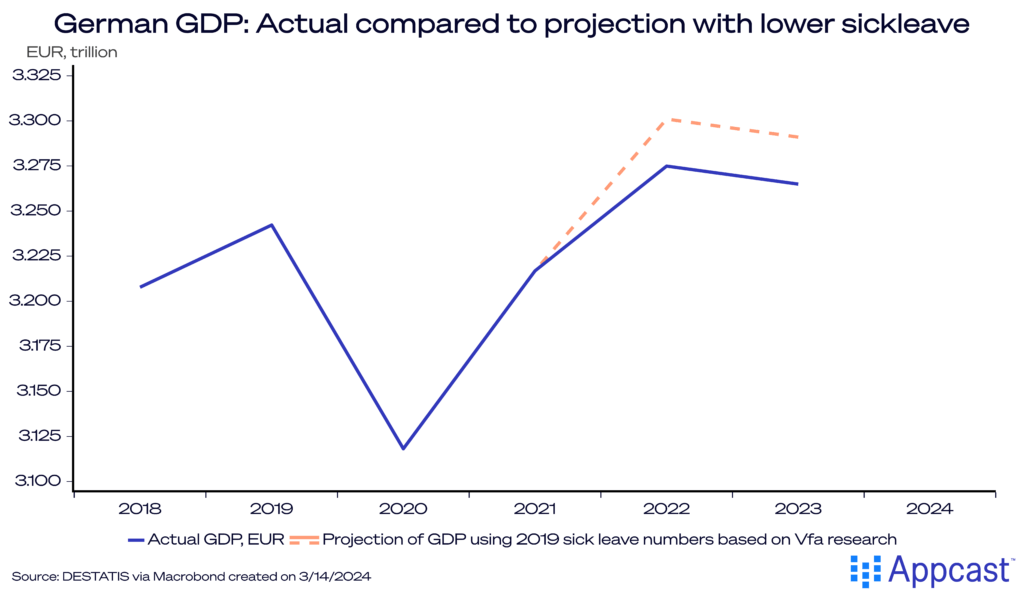
While it is reasonable to assume that workers in some sectors can compensate for higher sick leave by working more hours, this will not be possible for all companies and industries. Generally, hospitality and accommodation can compensate via somewhat longer waiting times, i.e. reduced service. Industrial production, on the other hand, is usually working at high capacity and with little slack. Therefore, higher sick leave will directly translate into lower output. Research shows that the four days of additional sick leave could decrease industrial output by up to 2.5 percent.
Data from the BKK (“Betriebskrankenkassen” – one of Germany’s health insurance funds) shows that industries are suffering from a disproportionately high share of sick leave. This is a heavy blow to the entire economy because Germany is still an industrial powerhouse in Europe: The manufacturing share of GDP is around 20%.
While German industries are suffering from a multitude of problems right now, ranging from high energy prices to weaker global demand, the very high number of workers on sick leave is depressing output even further.
What does that mean for recruiters?
About half a year ago we wrote about how several macroeconomic trends have caused the recent German economic malaise. One trend that we had not mentioned yet is the massive surge in sick leave. As it turns out, Germany is literally the sick man of Europe right now. German workers take an additional four days of sick leave compared to 2019 and this has depressed German GDP by an estimated 25 billion Euros in real terms both in 2021 and 2022 – about 0.6% percentage points of lost growth each year. That is a massive negative effect weighing on German companies, especially in the industrial sector.
On top of a very tight labor market with worker shortages, recruiters and HR departments now also need to tackle the problem of elevated sick leave.
Given that flu vaccination uptakes are so low compared to international standards, companies could offer workplace vaccinations. But just doing that is probably not enough. Employers also need to actively push workers to take up the offered flu shots and COVID boosters. The Stepstone Group, for example, offers flu shots to all employees in the U.K. and Germany – and schedules times for the employees to leave work to get them.
Elevated sick leave also calls for a more flexible recruitment strategy. In the industrial sector, it might mean having additional workers on the sidelines if absences increase unexpectedly. While this could be costly, it is probably less costly than having unexpected production backlogs and not fulfilling orders in time because output is constrained by worker shortages.
We do not fully understand all the health aftereffects that the pandemic has caused but one possibility is clear: Workers might suffer from more health problems for many years. Recruiters need to be aware and take this trend into account in their long-term staffing strategies.








